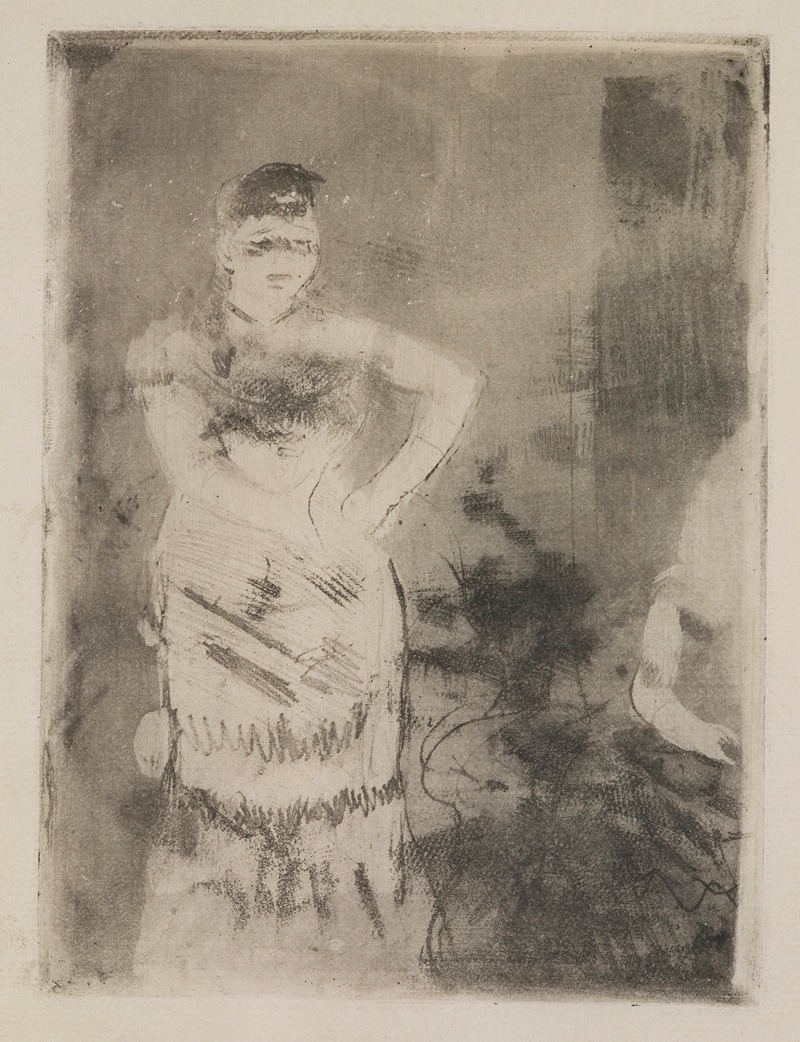
A Singer
A hand-painted replica of Edgar Degas’s masterpiece A Singer, meticulously crafted by professional artists to capture the true essence of the original. Each piece is created with museum-quality canvas and rare mineral pigments, carefully painted by experienced artists with delicate brushstrokes and rich, layered colors to perfectly recreate the texture of the original artwork. Unlike machine-printed reproductions, this hand-painted version brings the painting to life, infused with the artist’s emotions and skill in every stroke. Whether for personal collection or home decoration, it instantly elevates the artistic atmosphere of any space.
"A Singer" is a painting by the renowned French artist Edgar Degas, created around 1873-1874. Degas, a prominent figure in the Impressionist movement, is well-known for his depictions of dancers, musicians, and scenes of everyday life in Paris. This particular work exemplifies his interest in capturing the vibrancy and dynamism of contemporary urban life.
The painting portrays a female singer, likely a performer in a café-concert, a popular entertainment venue in Paris during the late 19th century. These venues were known for their informal atmosphere and variety of performances, including singing, dancing, and comedy acts. Degas was fascinated by such settings and often frequented them to observe and sketch performers and patrons.
In "A Singer," the subject is depicted in mid-performance, with her mouth open as she sings. Degas's use of pastel, a medium he favored for its ability to convey texture and light, is evident in the vibrant and expressive strokes that capture the singer's presence and the ambiance of the scene. The background is rendered with less detail, focusing the viewer's attention on the performer and her expressive gestures.
Degas's technique in this painting showcases his mastery of capturing movement and emotion. The singer's posture and the dynamic lines of her dress suggest the energy and passion of her performance. The use of light and shadow adds depth and highlights the contours of her figure, creating a sense of immediacy and intimacy.
"A Singer" reflects Degas's broader interest in the performing arts and his innovative approach to composition and perspective. Unlike many of his contemporaries, Degas often chose unconventional viewpoints, such as from the side or slightly above, to create a more dynamic and engaging composition. This approach is evident in "A Singer," where the angle and framing draw the viewer into the scene, almost as if they are part of the audience.
The painting is also notable for its exploration of modern life and the changing social dynamics of the time. By focusing on a performer in a café-concert, Degas highlights the growing popularity of such venues and the shifting cultural landscape of Paris. This subject matter, combined with his distinctive style, makes "A Singer" a significant work within Degas's oeuvre and the broader context of 19th-century art.
Today, "A Singer" is held in the collection of the Musée d'Orsay in Paris, which houses one of the most extensive collections of Impressionist and Post-Impressionist masterpieces. The museum's collection provides valuable insight into the artistic innovations of the period and Degas's contributions to the development of modern art.
In summary, "A Singer" by Edgar Degas is a compelling representation of a female performer in a 19th-century Parisian café-concert. Through his use of pastel and innovative composition, Degas captures the energy and emotion of the scene, offering a glimpse into the vibrant cultural life of his time. The painting remains an important work within Degas's body of work and continues to be celebrated for its artistic and historical significance.


















